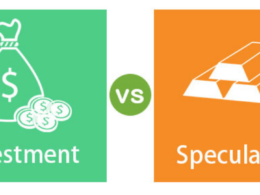What Is Information Bias?
Table of Contents
Information bias happens when someone records or measures data incorrectly, making it wrong. This can be because of mistakes, on-purpose lies, or unconsciously changing information to fit personal beliefs. It’s important to get accurate information to understand the truth.
Information bias can greatly impact investors’ decisions, leading to risky choices. This is because people tend to favor information that confirms what they already believe and give too much importance to recent information. It’s important to know these biases to make better investment decisions.
In today’s era of social media and constant connection, it’s crucial to pay attention to the information we receive. This information can either help or hurt our investment decisions and financial results.
KEY TAKEAWAYS
- Information bias happens when data or information is changed in a way that no longer shows the real picture.
- Confirmation and recency biases are two common examples of information bias affecting financial investors.
- These biases and others can cause investors to make bad decisions because they rely on too much or the wrong kind of information.
- Social media and the internet have increased the likelihood of people being biased toward personal finance and investing.
- Knowing about and avoiding information bias can help make investment decisions more fairly.
Information Bias and Investing
Information bias can cause investors to make bad decisions because of wrong data or by relying too much on irrelevant or too much information when deciding what to do in the market. With social media, much information is available from many sources, making information bias a big problem.
This bias can cause investors to make poor decisions. For example, they might think one news article or tweet is very important and ignore other important things about a company or the market. They might only look for information that agrees with their beliefs and ignore anything that doesn’t.
Some information investors use might not be as helpful for making trading decisions as they think. For example, the ups and downs of stock prices each day can be influenced by things outside of a company’s control, like how people feel about the market in general, and might not show how well the company will do in the long run.
Also, how well a company did in the past might not mean it will do well in the future since things change over time.
Studies have found that investors who focus on the right information and avoid being biased by other stuff can make better decisions. For instance, one study showed that people who traded stocks less often and didn’t pay too much attention to stock market news made more money than those who traded a lot and watched the news closely.
Three Common Information Biases
- People make mistakes called recency bias, availability bias, or recency bias. They wrongly think that things that happened recently will happen again soon. Because they give more importance to recent events, they ignore older or harder-to-find information that might be important.
- Confirmation bias: Confirmation bias occurs when people look for, understand, and remember information that fits their existing beliefs. They ignore or don’t pay attention to information that disagrees with their beliefs.
- Asymmetric information: Asymmetric information happens when one side of a deal knows more than the other. For example, when someone sells a used car, they usually know more about it than the buyer. When people apply for insurance, they know more about their health than the insurance company. This unequal information can sometimes cause problems in the market.
How to Avoid Information Bias in Investing
To prevent information bias in investing, keep these tips and strategies in mind:
- Limit exposure to financial news and social media: Being well-informed is important, but reading too much financial news and social media can worsen information bias. Choose reliable sources and set times to check the news.
- Diversify your information sources: Getting news and info from different sources, even ones you don’t always agree with, can help balance out the effect of any one piece of information on your investment plan. It gives you a broader perspective.
- Base decisions on objective analysis: Concentrate on the company’s financial health and prospects instead of short-term market or new ups and downs. When deciding, consider your long-term investment goals, and don’t let feelings like fear or greed influence you.
- Seek professional advice: Talk to a financial advisor or investment expert for good investment advice.
Information Bias and the ‘Market for Lemons’
In the “Market for Lemons,” the problem of information bias shows that when one side knows more than the other, it can cause market problems. Economist George Akerlof discussed this in a famous 1970 paper. In his example, a “lemon” is a used car with hidden problems only the seller, not the buyer, knows about.
This idea can apply to other markets where the quality of things is uncertain. The information bias happens because sellers know more about what they’re selling than buyers. So buyers might not want to pay much for something they worry is not quality.
FAQs
1. What other biases can affect investing decisions?
Ans: Behavioral finance has found a few ways people think can make investment decisions go wrong. Some of these are implicit bias, being too sure of yourself, following trends too much, being scared to lose, and sticking to one idea even if it might be wrong.
2. What is behavioral economics?
Ans: Behavioral economics combines psychology and economics to study people’s choices in real-life situations. It questions the idea that people always act rationally, which traditional economics believes. Instead, it uses experiments to find out how people behave. Behavioral finance is when these ideas are used to understand how people make financial decisions, like investing.
What is shared information bias?
Shared information bias happens when group members mostly talk about things everyone already knows about instead of looking for new information. This can make the group make not-so-great decisions.
The Bottom Line
Biased information is data or facts that don’t show the true picture. It can happen because of mistakes, personal preferences when getting information, or on purpose.
In behavioral economics, confirmation bias, retrospective bias, and asymmetric information are all types of biased information that can make investors make bad decisions. To avoid this, stay fair, get information from different places (even if it disagrees), and ask others for advice.
Trade on the Go. Anywhere, Anytime
Join one of the biggest crypto exchanges in the world! Enjoy low fees and great customer support while trading safely. You can use Binance’s tools to see your trading history, manage auto-investments, and view price charts without fees. Sign up for free and join millions of traders worldwide in the crypto market.










